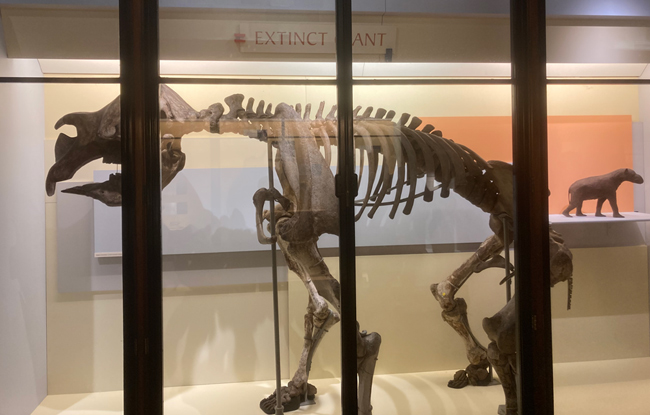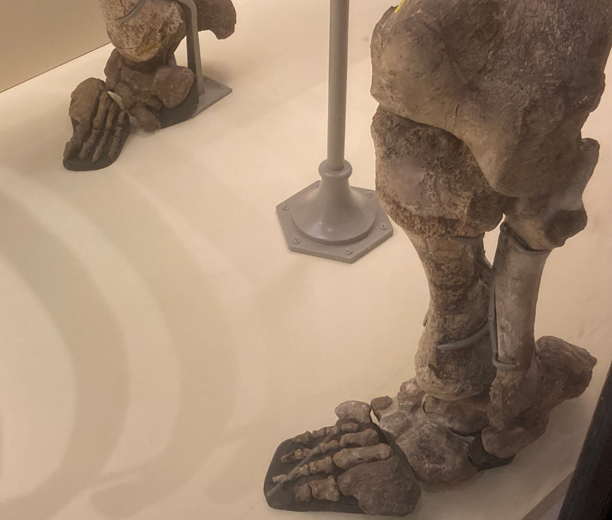Rare Diprotodon Fossils on Display
Whilst on a short visit to the London Natural History Museum Everything Dinosaur team members took some photographs of the Diprotodon fossils on display. Diprotodon (D. optatum) is the largest marsupial known to science. Males measured around 1.8 metres high at the shoulder. Their body length was approximately 4 metres, and the largest specimens are thought to have weighed up to 3,500 kilograms. Females were smaller than males.

Picture credit: Everything Dinosaur
Diprotodon Fossils
Diprotodon (pronounced dip-pro-toe-don) was part of the Australian “megafauna” of the Pleistocene. The genus name is from the ancient Greek meaning “two protruding front teeth”. It is thought that this rhino-sized marsupial became extinct 40,000 years ago. At this time, Australia’s climate changed. It became much more arid. This climate change is thought to have been the main cause for their extinction. However, hunting from the first Aboriginal Australians cannot be ruled out.

Picture credit: Everything Dinosaur
The picture (above) shows a replica of Diprotodon on display alongside Diprotodon fossils at the London Natural History Museum. There are very few Diprotodon models/toys available. It is rare for examples of ancient marsupials to made into replicas by mainstream model manufacturers.
To view a range of prehistoric animal figures that does include replicas of prehistoric mammals: CollectA Deluxe Scale Prehistoric Animal Models.
Syndactylous Feet
Diprotodon is part of the Order Diprotodontia, which includes, wombats, kangaroos, koalas and possums. Syndactylous feet are a trait of the extant Diprotodontia and also assumed to be present in Diprotodon. The second and third toes are fused together. It is thought that Diprotodon also had fused second and third toes.

Picture credit: Everything Dinosaur
Visit the award-winning Everything Dinosaur website: Visit the Everything Dinosaur website.

